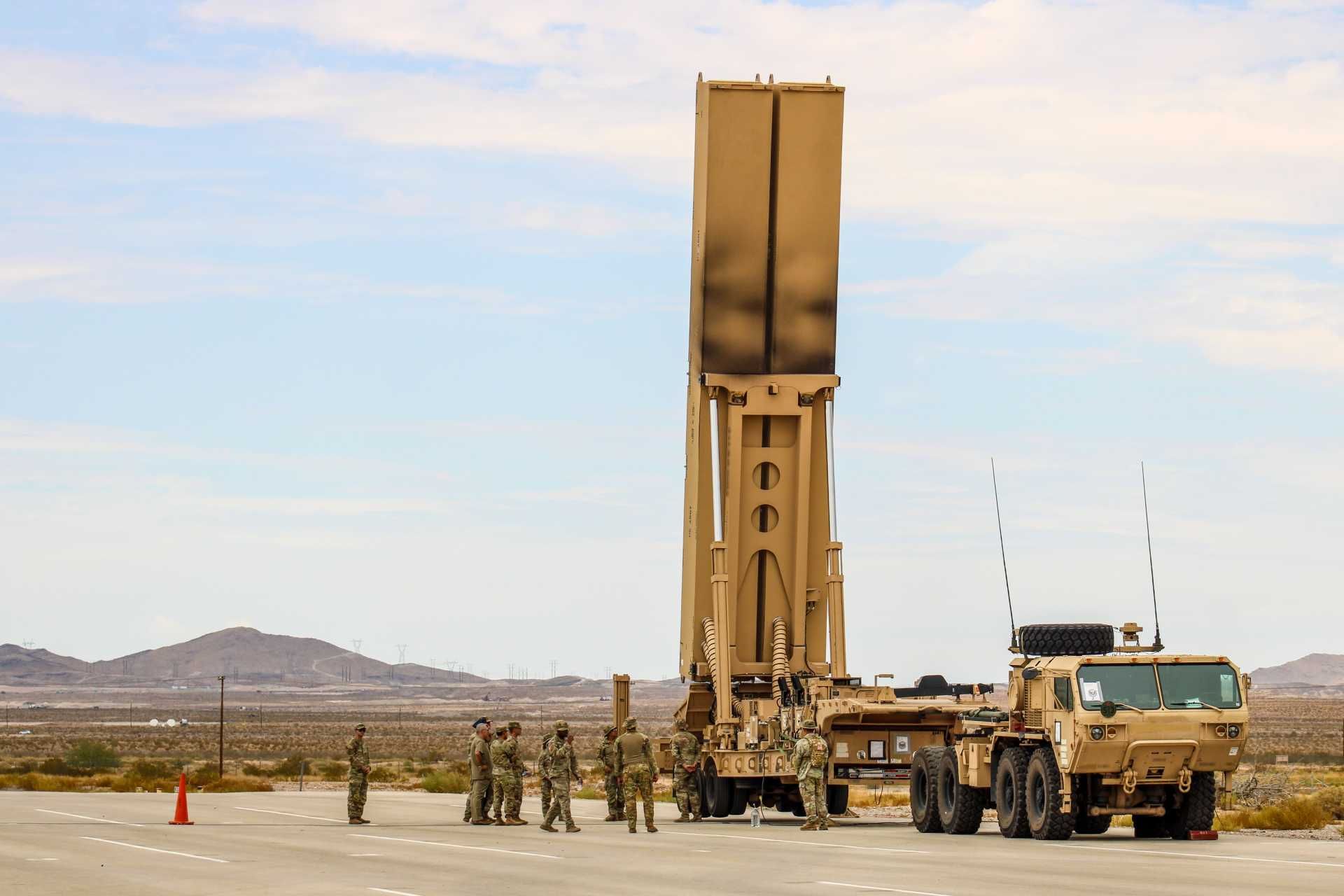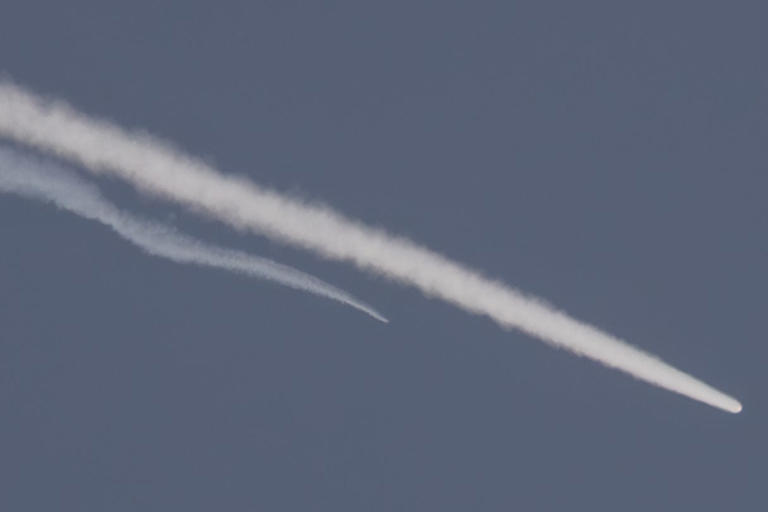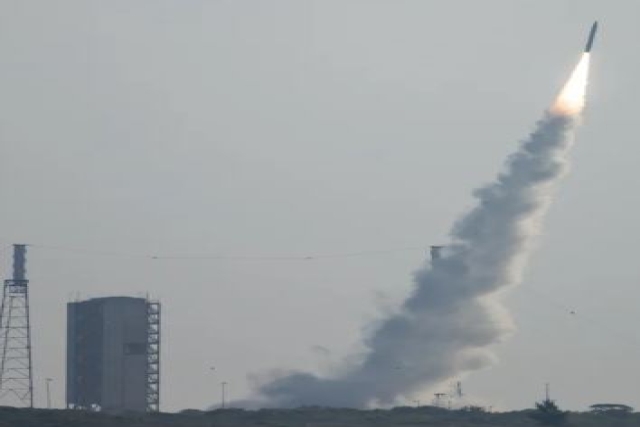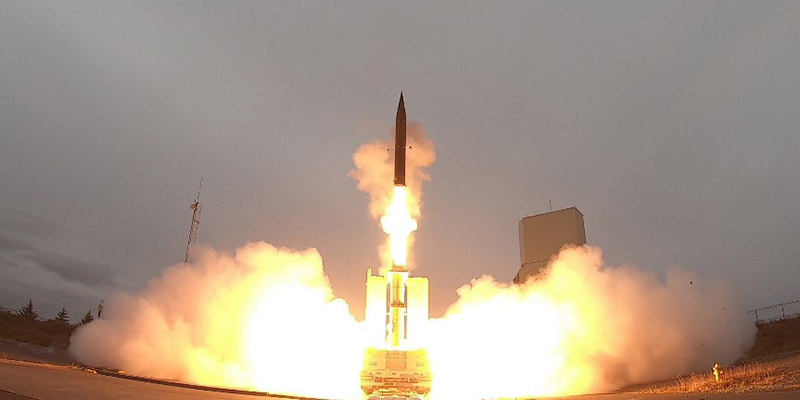America’s Answer to China and Russia: Dark Eagle Hypersonic Missile Program Accelerates Toward Deployment
Positioned as a rapid-response, precision strike capability, the Dark Eagle is designed to neutralize critical enemy assets across vast distances, boasting an operational range of up to 2,700 kilometers—a feature increasingly vital amid mounting tensions in the Indo-Pacific and European theatres.
(DEFENCE SECURITY ASIA) –In a landmark announcement that underscores Washington’s intensifying push for next-generation strategic dominance, the United States Army has formally named its new long-range hypersonic missile system as the “Dark Eagle.”
Positioned as a rapid-response, precision strike capability, the Dark Eagle is designed to neutralize critical enemy assets across vast distances, boasting an operational range of up to 2,700 kilometers—a feature increasingly vital amid mounting tensions in the Indo-Pacific and European theatres.
“The name (Dark Eagle) pays tribute to the eagle, a master hunter renowned for its speed, stealth, and agility — qualities that reflect the Long-Range Hypersonic Weapon (LRHW)’s combination of velocity, accuracy, maneuverability, survivability, and versatility,” the U.S. Army highlighted in its official statement.
According to military officials, the deliberate use of “Dark” signifies the weapon’s potent ability to operate unseen, dismantling enemy strike forces, communications hubs, and strategic nodes before adversaries can even react to the unfolding threat.
“Dark Eagle brings to mind the power and determination of our country and its Army, embodying the spirit and lethal capability of the Army’s and Navy’s hypersonic weapon development efforts,” the statement continued, underscoring the weapon’s symbolic and operational significance.
Mounted on a highly mobile ground-based transporter erector launcher (TEL) system, the Dark Eagle can be deployed swiftly and is capable of accelerating to Mach 5 speeds—approximately 6,115 kilometers per hour—delivering devastating strikes across intercontinental distances.
According to an assessment provided by the U.S. Army to the Congressional Research Service in March 2023, the hypersonic missile is capable of skimming the upper atmosphere, maneuvering unpredictably to evade enemy detection, and descending onto its targets with such velocity that traditional air defenses become virtually irrelevant.

On April 25, amid growing speculation about America’s hypersonic advancements, an unidentified projectile was observed streaking skyward during a classified Department of Defense test from Cape Canaveral Space Force Station, prompting widespread belief among space observers that another Dark Eagle test had taken place.
The early morning launch, kept tightly under wraps by U.S. military authorities, lifted off from Cape Canaveral over the Atlantic Ocean without public notification, reflecting the growing strategic sensitivity surrounding hypersonic weapons development.
Clues pointing to the launch emerged through a series of unusual navigational advisories—known as NOTAMs—issued in the preceding days, alerting aviation and maritime operators of expected hazardous activity in the vicinity.
“It got shot out of a launcher and then ignited, and it took off — a lot, lot, lot faster than any other Falcon 9 that you would see lift off here at the Cape,” remarked Cape Canaveral-based space photographer Jerry Pike, who had anticipated the event.
“It left a big, solid propellant smoke trail on its way up,” added Pike, who had stationed his camera along the shores of Jetty Park, lens trained toward the north, awaiting any sign of an unusual launch event.
Responding to inquiries, a spokesperson for the Department of Defense confirmed to FLORIDA TODAY that a test involving unspecified technologies had indeed occurred but stopped short of confirming the nature of the launch.


“A combined team of government, academic, and industry partners conducted a test on behalf of the Department of Defense from a test site at Cape Canaveral Space Force Station. We are currently evaluating the results of the test,” the statement clarified without divulging further operational details.
Consistent with prior patterns of hypersonic testing secrecy, the Department of Defense refrained from mentioning missiles, hypersonic technologies, or the Dark Eagle program explicitly, highlighting the strategic veil surrounding these highly sensitive capabilities.
In a similar episode in December 2024, the U.S. Army and Navy executed a clandestine, successful test launch of a long-range hypersonic weapon from Launch Complex 46 at Cape Canaveral, showcasing America’s determination to accelerate fielding operational hypersonic strike platforms.
The Dark Eagle system, a cornerstone of the Army’s Long-Range Hypersonic Weapon (LRHW) program, represents a major leap forward in conventional prompt strike technology, enabling U.S. forces to project power globally with unprecedented speed and precision.
Developed under the auspices of the Conventional Prompt Strike (CPS) program, the Dark Eagle system integrates a ground-mobile launcher, command-and-control vehicles, support elements, and the Common Hypersonic Glide Body (C-HGB), jointly engineered with the Navy for cross-service interoperability.

The missile concept involves a booster propelling the glide body to hypersonic speeds, after which the unpowered vehicle maneuvers dynamically through the atmosphere, exploiting its speed and unpredictability to defeat even the most sophisticated integrated air and missile defense networks.
In anticipation of intensifying great power competition, the U.S. Army plans to deploy the first fully operational Dark Eagle batteries to its Multi-Domain Task Forces (MDTFs), units specifically configured for operations in the increasingly contested Indo-Pacific and European theatres.
Strategically, the LRHW is intended to strike high-value, time-sensitive targets, including advanced integrated air defense systems (IADS), mobile ballistic missile launchers, hardened command bunkers, and critical logistical hubs well beyond the frontlines, denying adversaries sanctuary.
By leveraging the same missile and glide body architecture for both the Army and Navy, the Department of Defense achieves critical economies of scale while ensuring joint force flexibility, although the Army will employ land-based truck launchers while the Navy adapts the system for ship and submarine deployments.
Among key program milestones, the Dark Eagle has already undergone successful glide body flight tests despite prior setbacks related to booster performance, signaling incremental but steady progress toward operational readiness.

The delivery of the first prototype Dark Eagle battery to Army units in 2023, although initially without live missiles, represented a symbolic turning point in hypersonic force integration, with full live-fire testing now slated throughout 2024 and 2025.
The emergence of Dark Eagle comes at a pivotal moment when both China and Russia have fielded operational hypersonic weapons—the DF-17 ballistic missile and the Avangard glide vehicle, respectively—posing direct challenges to U.S. military superiority across multiple theaters.
The Dark Eagle thus forms a vital pillar within America’s broader hypersonic modernization efforts, complementing the Air Force’s Air-Launched Rapid Response Weapon (ARRW) and the Navy’s Conventional Prompt Strike program for Ohio- and Virginia-class submarines.
From a geo-strategic lens, Dark Eagle is a game-changing asset designed to disrupt adversary war plans, complicate their defensive postures across vast geographic spaces, and restore conventional escalation dominance, especially in environments like the South China Sea, Taiwan Strait, Baltic region, and Arctic corridors.
Nonetheless, the program faces formidable obstacles, including overcoming industrial bottlenecks for hypersonic weapon production, expanding the infrastructure for flight testing and evaluation, and ensuring resilient command-and-control systems capable of operating at hypersonic velocities.

In the current global security environment, where China is dramatically expanding its missile forces and Russia remains aggressively focused on strategic deterrence, Washington views the operationalization of Dark Eagle as an existential necessity to maintain credible conventional and nuclear deterrence.
As 2025 unfolds, the successful fielding of the Dark Eagle will not only reshape America’s ability to deter or defeat peer adversaries but will also fundamentally alter the strategic calculus of future conflict in an era increasingly defined by speed, precision, and global reach.
— DEFENCE SECURITY ASIA


